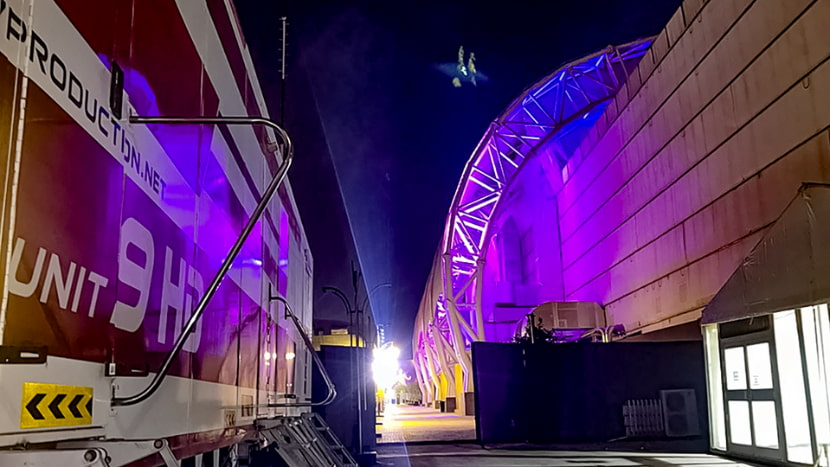
In the rapidly advancing digital era, artificial intelligence (AI) is fundamentally transforming how audiences engage with media content. Personalized spectator experiences, once a futuristic concept, are now a tangible reality powered by sophisticated AI technologies. For broadcasters and media companies in Saudi Arabia, harnessing AI can unlock unprecedented levels of audience engagement, satisfaction, and loyalty. This blog explores how AI is revolutionizing spectator experiences, the key technologies involved, and the implications for media companies striving to remain competitive in a dynamic market.
Understanding Personalized Spectator Experiences
Personalized spectator experiences involve delivering content that aligns with individual preferences, behaviors, and interests. By leveraging extensive data and AI-driven algorithms, media providers can offer tailored recommendations, interactive features, and seamless viewing experiences that resonate uniquely with each viewer. This level of personalization not only enhances user satisfaction but also encourages prolonged engagement and fosters a deeper connection between the audience and the content.
AI Technologies Driving Personalization
Several AI technologies are at the forefront of creating personalized spectator experiences. These technologies work synergistically to analyze and interpret vast amounts of data, enabling media providers to understand and anticipate viewer preferences with remarkable accuracy. By integrating these advanced AI solutions, broadcasters can deliver highly customized content that meets the unique needs and desires of each audience member.

Machine Learning and Predictive Analytics
Machine learning and predictive analytics play a crucial role by analyzing vast amounts of data to identify patterns and predict viewer preferences. These algorithms help broadcasters recommend relevant shows, movies, and live events, ensuring that each viewer receives a curated and engaging content lineup. Continuously learning from user interactions and viewing habits, machine learning models refine their predictions, offering increasingly accurate and personalized recommendations over time.
Natural Language Processing (NLP)
Natural Language Processing (NLP) enhances personalization by enabling AI systems to understand and respond to human language. This technology powers voice-activated assistants and chatbots, allowing viewers to interact with their media platforms through simple voice commands or text inputs. Whether searching for content, adjusting settings, or seeking recommendations, NLP makes interactions more intuitive and efficient. Additionally, NLP can analyze viewer feedback and sentiment, providing broadcasters with valuable insights into audience preferences and areas for improvement.
Computer Vision Technologies
Computer vision technology analyzes visual content to understand context, emotions, and preferences. By assessing viewer reactions and interactions with different types of content, AI can refine recommendations and tailor visual presentations to better suit individual tastes. For example, computer vision can detect facial expressions and gestures during live broadcasts or recorded shows, enabling real-time adjustments to content delivery based on audience engagement levels. Advanced recommendation engines, utilizing collaborative filtering, content-based filtering, and hybrid models, continuously learn and adapt based on user behavior, ensuring that suggestions remain relevant and engaging over time.
Enhancing Viewer Engagement Through AI
AI-driven personalization offers numerous benefits that significantly enhance viewer engagement. By delivering content that aligns with individual interests, AI ensures that viewers are more likely to engage with and enjoy the media they consume. This tailored approach reduces content fatigue and increases the likelihood of repeat viewership. Moreover, AI enables interactive features such as personalized advertisements, dynamic storylines, and real-time content adjustments based on viewer feedback, making the viewing experience more immersive and participatory.
AI also optimizes content scheduling by analyzing viewing patterns to determine the best times for releasing new content. This strategic scheduling ensures maximum visibility and engagement, helping broadcasters capture audience attention when it is most receptive. Furthermore, AI technologies like automated subtitles and language translation enhance accessibility, making content more inclusive and reaching a wider, more diverse audience.
Implications for Media Companies
Integrating AI into personalized spectator experiences presents both challenges and opportunities for media companies. Managing large volumes of viewer data requires strict privacy and security measures to ensure compliance with regulations and safeguard user information. Investing in AI-driven personalization demands significant resources, including technology infrastructure and skilled personnel, which media companies must prioritize to leverage AI effectively.
However, early AI adoption provides a competitive advantage by meeting evolving audience expectations and maintaining market relevance. AI assists in content creation by identifying trends and suggesting themes that resonate with viewers, enhancing content success. Additionally, AI-enabled personalized advertising and targeted sponsorships improve monetization strategies, boosting ad performance and increasing revenues.
Opportunities for Growth and Innovation
Embracing AI opens numerous avenues for growth and innovation within the media landscape. AI-powered translation and localization tools allow media companies to tailor content for different regions and languages, facilitating global expansion and reaching a more diverse audience. Additionally, AI can drive innovation in content delivery, offering new formats and interactive experiences that cater to the evolving tastes of modern viewers.
Saudi Arabia’s Vision 2030 initiative, which aims to diversify the economy and promote cultural exchange, has fostered a more open and dynamic media environment. Media companies that align their AI-driven strategies with the kingdom’s goals can tap into a growing market with substantial potential. The strategic location of Saudi Arabia and increasing investments in media infrastructure make it an attractive hub for regional broadcasting, offering further opportunities for expansion and innovation.

Embracing the Future of Personalized Broadcasting
The future of broadcasting lies in personalization, driven by the transformative power of AI. By understanding and implementing AI technologies, media companies can create engaging, customized experiences that resonate with viewers on a personal level. In Saudi Arabia’s dynamic and evolving media environment, embracing AI is not just an option but a strategic imperative for success.
At Seven Production, we are committed to helping you harness the potential of AI to elevate your broadcasting operations. Our comprehensive solutions and deep industry knowledge make us the ideal partner for navigating the future of personalized spectator experiences. Ready to transform your media offerings with AI-driven personalization? Contact us today to discover how we can help you engage and delight your audience like never before.

